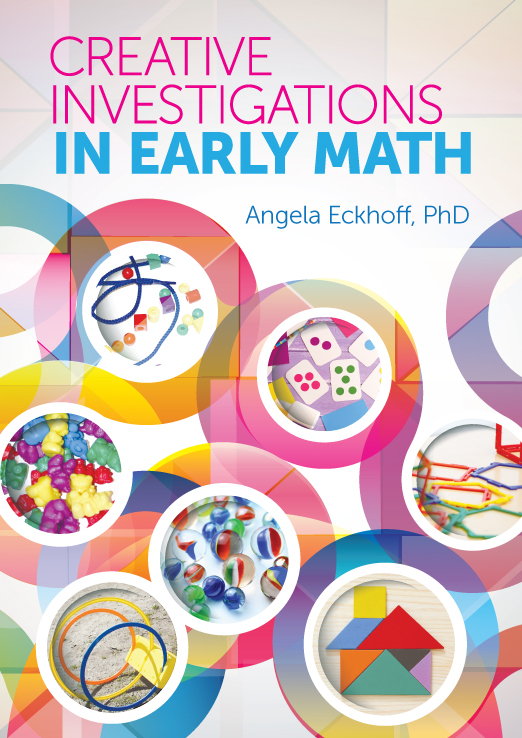Computation is one of the earliest math skills we learn. Children as young as two notice when something is more or less (especially when that something is food or toy related.) Young children are also concerned with division, seeking to have things split up equally in order to ensure fairness. With computation as the basis for all mathematical functions, it makes sense to begin teaching it to preschoolers through this natural curiosity about numbers. The question is how best to do it.
In her book Creative Investigations in Early Math, Angela Eckhoff provides just that information. Teachers can incorporate computation into everyday parts of the classroom with questions like:
- Which group has more? How do you know?
- If we want to divide these into two equal groups, how will we do that?
- If you have four toys and share one, how many will you have?
- How many pieces do you have? How many do I have? Who has more?
Oftentimes, children will be eager to try and puzzle out the answers to these questions. By providing concrete examples—toys, snacks, etc.—children are able to work through the problems hands-on and realize how important math is. Below is a computation activity that will have your students counting in no time!
How Many?
Topic: Count and document the number of a specific type of item in their classroom or school.
Objectives
- Children will count and document the number of everyday items in their classroom or school
- Children will use number words as they count
- Children will compare groups of objects looking for similarities and differences
- Children will use descriptive words (such as more, less, greater, fewer, same, and equal) to explain their comparisons
Materials:
- Student math journals or plain paper
- Crayons, markers, or pencils
Overview:
This activity helps children become more comfortable with counting and recognizing that they can practice and have fun counting items anywhere they go. You can plan this activity for the whole class, small groups, or individuals
Activity Steps:
- Explain to the children that they will be counting the numbers of specific objects in their classroom and will use their math journal to document what they find
- For practice, encourage the children to count the number of windows in their classroom. They can document the number of windows they find by drawing a window or writing the word window in their journal and writing the corresponding number next to it
- You can suggest a few items for the children to count, and then let them choose items on their own
- Talk with the children about comparing or looking for similarities and differences. Then ask the children to compare some of the items they have counted. Some questions to consider: Do we have items they have counted. Some questions to consider: Do we have more doors or windows in our classroom? What do we have equal numbers of in our classroom? How can you tell they are the same amount?
- Introduce and reinforce the math vocabulary for the children during the game: more, less, fewer, greater, same, and equal.
Instructions
1. Ask the children where they think cows live. Display photos or pictures of
barns and farms and have the children describe the buildings they see.
2. Encourage the children to use blocks to make barns and cow pens.
Teacher - to - Teacher Tip
* After the children have built their barns and cow pens, provide toy cows for
them to play with in their block structures.
s o n G
A Dairy Cow by Laura Wynkoop
(Tune: "Do You Know the Muffin Man?")
Oh, have you seen a dairy cow,
A dairy cow, a dairy cow?
Oh, have you seen a dairy cow
Inside a big red barn?
Oh, yes, I've seen a dairy cow,
A dairy cow, a dairy cow.
Oh, yes, I've seen a dairy cow
Inside a big red barn.
Assessment
Consider the following:
* Display photos of a farm, a jungle, and a city. Can the children identify where
cows live?
* Can the children use the blocks to create barns and fences?
